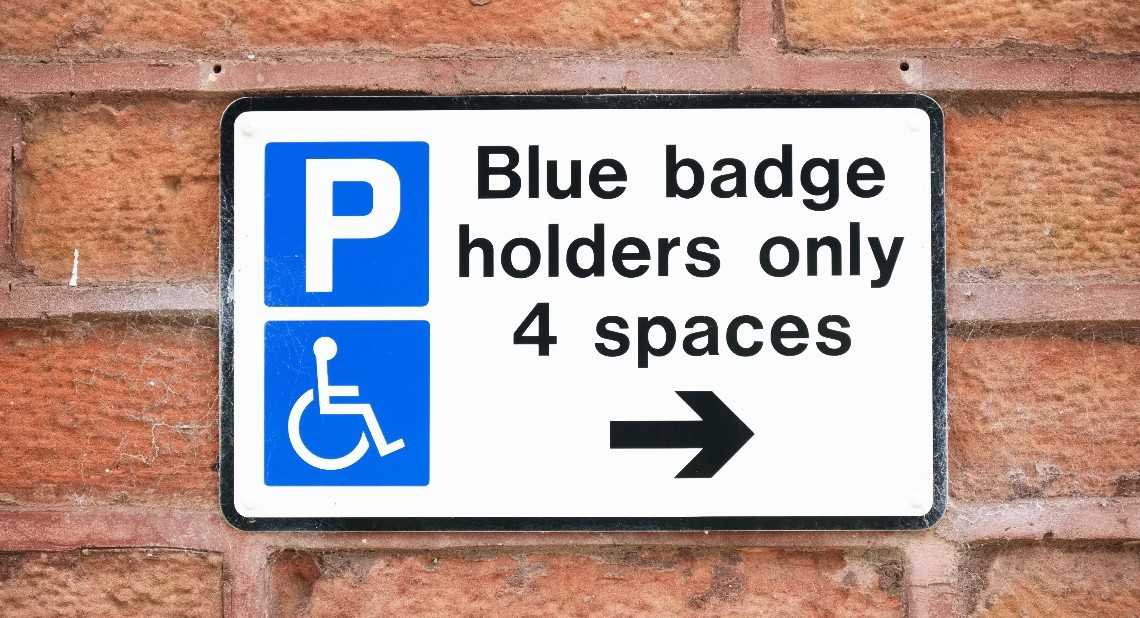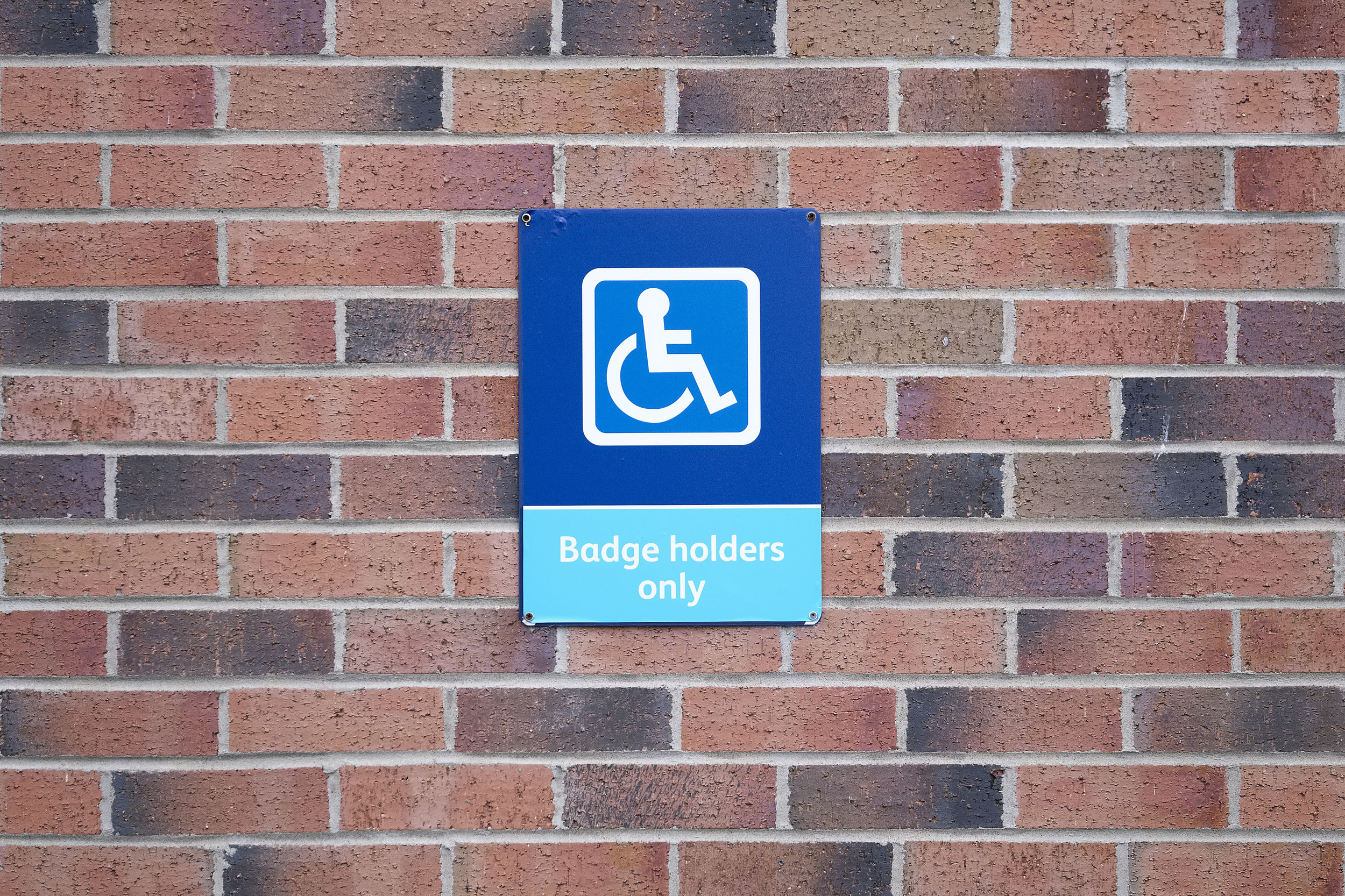In line with changes to mobility allowances in the UK, the eligibility criteria for a Blue Badge has changed. We asked independent mobility consultant Helen Dolphin MBE to explain the scheme in a bit more detail and provide a roundup of what you need to do to check whether you’re eligible for a Blue Badge and how to apply.
The Blue Badge scheme is a nationally recognised on-street parking scheme for disabled people and helps those with mobility difficulties park close to where they need to go. A Blue Badge is for the benefit and use of the Blue Badge holder only and must only be displayed if the disabled person is travelling in the vehicle as a driver or passenger. Although this is a UK-wide scheme, the rules on how and where a Blue Badge can be used differ but you can download a copy of the Blue Badge booklet issued by the Department for Transport at www.gov.uk.
You can qualify for a badge through two different routes, either “with further assessment” or “without further assessment” if you meet the stated criteria. People in receipt of the Higher Rate Mobility Component of Disability Living Allowance (HRMCDLA) are still entitled to qualify for a Blue Badge without further assessment, as well as those who are registered blind, in receipt of War Pensioner’s Mobility Supplement (WPMS), or have been awarded a lump sum benefit at tariffs 1-8 of the Armed Forces Compensation Scheme. However, additional criteria for those who receive Personal Independence Payment (PIP) have now been introduced.
There are differences in qualifying criteria depending on which country in the UK you live in. However, wherever you live, if you score 8 points or more in the “moving around” activity of PIP you will qualify for a badge without further assessment. In Northern Ireland this is the only PIP activity that will enable you to have a Blue Badge without further assessment. However, in Scotland and Wales you can qualify if you score 12 points in the “planning and following a journey” activity and in England you will qualify if you score 10 points specifically for Descriptor E under the “planning and following journeys” activity.
If you don’t qualify for PIP following a reassessment you will be able to continue using your Blue Badge until it expires. Although you would no longer qualify for a Blue Badge “without further assessment”, you may still qualify under the “with further assessment” route. The criteria for these are different depending on where you live.
The Blue Badge scheme
The Blue Badge scheme is administered by local authorities and the Motability Scheme has no involvement with the administration or running of the Blue Badge scheme. Any queries about this should be directed to your local council.
A Blue Badge is usually issued for three years, but this may be for less if your mobility allowance is for a shorter period of time. If you already have a Blue Badge you should check with your local authority how long before the expiry date you should apply to renew.
What you’ll need to apply
The application process is slightly different depending on where you live. You can apply online at gov-uk/apply-blue-badge for mainland UK, www.mygov.scot/apply-blue-badge in Scotland and www.nidirect.gov.uk/articles/apply-or-renew-blue-badge in Northern Ireland.
You’ll need details of your current Blue Badge (if you have one), a digital or signed photo, your National Insurance number, proof of identity and proof of address. The application can take up to 45 minutes, but you can save this part way through and come back to it at a later time if you need to.
You can also apply directly to your local authority for a Blue Badge. Most local authorities offer a postal application as well as online application. However, if your local authority only offers digital application then they should offer assistance to enable you to do so.
The application process and timescales can differ slightly across different regions, so you should contact your local council directly for the finer details.
In January 2019, The Department for Transport updated its online service for people to apply for a Blue Badge. The new service enables people to apply for a Blue Badge online without needing to send any of their supporting documents in the post, and is expected to decrease the amount of time it takes to make an application. An offline system will still be available for those who are not able to apply online. A video has been created to illustrate how the new online application too can be used. You can watch the video here.
Toll roads and congestion schemes in the UK
For most toll roads and congestion schemes in the UK a concession is offered to disabled people provided they meet certain criteria set by the operators. It is always advisable to check what the criteria are beforehand. For a short summary of the majority of toll roads in and across the UK, looking at the qualifying criteria and how to apply, you can read Helen Dolphin’s article on Toll road and congestion scheme charges across the UK.
Related articles:
Qualifying for a Blue Badge with Personal Independence Payment (PIP)
Toll road and congestion scheme charges across the UK
How to make sure Personal Independence Payment (PIP) works for you
The Motability Scheme enables disabled people and their families to access a brand new car or scooter, by exchanging their mobility allowance to lease the vehicle of their choice. Find out more:
![]()






